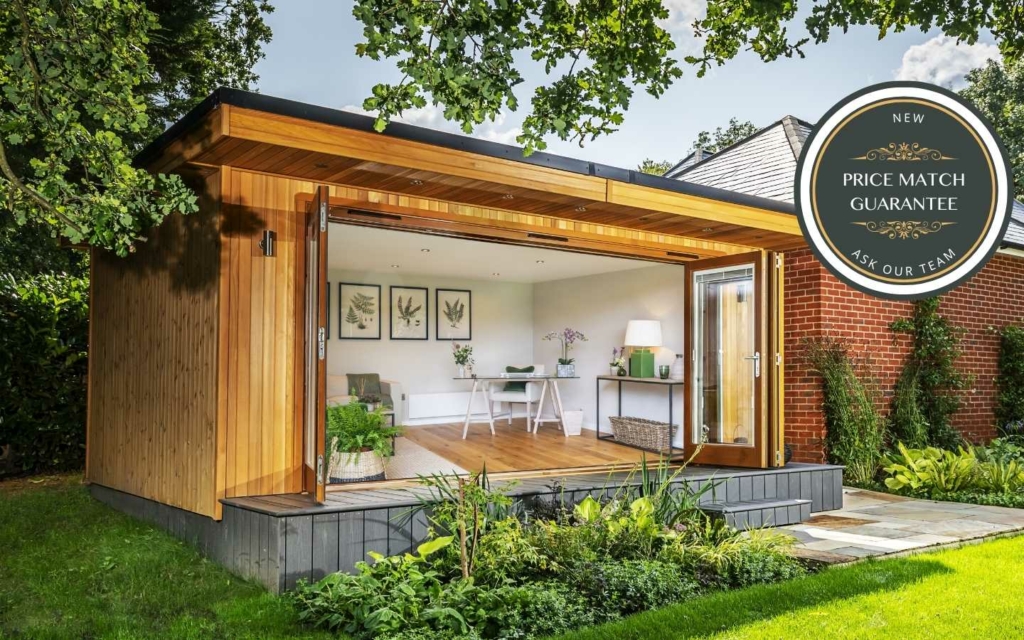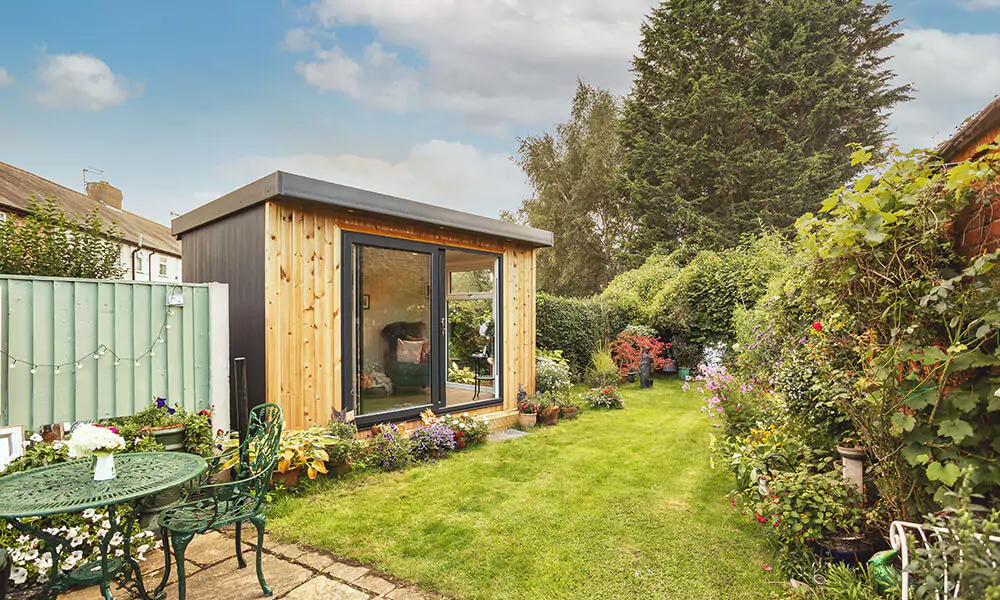The concept of "change in use" is crucial when building garden offices, conservatories or outhouses. Planning permission considerations related to changes in use are the following: From residential to non-residential use:
In most cases the planning permit will be required to transform non-residential structures (such as garages or agricultural structures) into residential spaces or garden offices. This is because there will be a change in use classification.
Garden Rooms as Living Space:
The use of a garden space as a separate living space (e.g. an apartment, guest house or rental unit) is considered to be a change in usage. The building permit is required to ensure the structure is in compliance with residential standards and rules.
Business Use:
Planning permission might be required in the event that you intend to use the garden and conservatory, the extension or extension. to serve a business purpose (e.g. as an office for an office at home with frequent visitors and employees). This is due to the potential impact on the neighborhood, such as traffic and noise as well as parking.
Educational or Community Use
Changing the use of a garden building to an educational or community space (such as an auditorium or a meeting space) is also a requirement for approval for planning. The local authorities will evaluate the appropriateness of the area as well as the impact on the area around it.
Impact on Local Infrastructure
Any modification to the use of which directly impacts the infrastructure in the local area (e.g., roads, drainage, and public services) usually requires planning permission. The local planning authority will assess these impacts as part the application process.
Dual Use
Planning permission is required for homes with mixed-use (part commercial, part residential) to determine and control clearly the different uses of the property.
More footfall, traffic and revenue:
If the proposed change could result in an increase in traffic or footfall like converting a garden into a small shop space and so on, a planning permit will be required to handle any potential impacts to the area.
Regulations for Building Regulations:
Although it might not be a strictly planned issue however, any modifications to the use must be in line with the building codes to ensure standards of security, energy efficiency, and health. This is particularly relevant in the case of conversion to a habitable space.
Environmental Impact:
Planning permission is required for any changes to the use that might affect the environmental. One example is changing an agricultural area into a residential space. The application could require an environmental assessment.
Community and Amenity Effect:
The impacts on local amenities and the nature of the region is a major aspect to consider. If you want to turn an outdoor space into a cafe, for instance it is necessary to obtain planning permission. This will ensure the plan is compatible with community plans in the area and also maintains the local amenities.
Spaces not permitted to be used include:
In areas designated as conservation areas, National Parks (AONB), or Areas of Outstanding Natural Beauty, changes in use are subject to more stringent controls, to preserve the character of the area. In these cases, planning permission is required.
Local Planning Policies
Local planning authorities usually have strict policies regarding changes of use. These policies can be very different. These guidelines are crucial for understanding what changes require approval and the criteria that need to be met.
Summary A planning permit is required for any major change in use of an extension or conservatory. This includes garden rooms, conservatories or extensions. This ensures that the new use is compatible with the site and complies to local and national planning policy. It also addresses any potential impacts to the environment or community. An early consultation with the local authority responsible for planning is crucial to determine particular requirements and get approvals. Read the top rated max height without planning permission for blog info including best electric heater for cabin, garden room planning permission, what size garden room without planning permission uk, composite garden office, costco outbuildings, garden room conservatory, outhouse garden rooms, outhouse, 4m x 4m garden room, insulated garden buildings and more.

What Planning Permits Do You Need For Garden Rooms Etc In Terms Of Environmental Impact?
Consideration of the environmental impact when planning to build a garden room, conservatory, outhouses or garden offices could influence the necessity of planning approval. Be aware of the following environmental considerations:
Planning permission might be required in the event that the proposed construction will alter the local wildlife habitats, such as trees, hedgerows or ponds. In order to minimize and determine the effect, an eco-survey may be required.
Habitats and species protected
A planning permit is necessary when the property is animals that are protected (e.g. newts, bats) or is within or close to habitats of Special Scientific Interest (SSSI). To ensure their protection, it is necessary to implement specific steps.
Preservation Orders for Trees Preservation Orders
If the proposed structure involves the removal or modification of trees protected by TPOs, a planning permit is necessary. Local authorities will review the impact of the proposed structure and may recommend replacement trees or other mitigation measures.
Risk of flooding and Water Management Risk and Water Management
Planning permission may be required for development within flood-prone areas or near waterbodies. A flood risk assessment (FRA) could be required to make sure that the structure is capable of draining and does not increase flood risks.
Sustainable Construction Practices:
You may need approval for your plans to ensure sustainable construction and materials. Consideration should be given to energy efficiency as well as insulation and carbon footprint.
Surface Water Runoff and Drainage:
It is essential to take into consideration the environmental impact of any construction project. The planning permission will ensure that the drainage system is functioning and will prevent flooding or logging.
Soil Stability and Soil:
A permit for planning is required in cases where the proposed building could impact the stability of soil or the land. It includes issues such as soil erosion and subsidence on sloped sites.
Air Quality
For developments that may impact the quality of air in the local area for example, those located near major roads or industrial zones the need for planning permission. This will ensure that air pollution is within acceptable levels, and mitigation techniques are implemented.
Noise Pollution:
Planning permission is required if the use of the garden or an extension will likely cause substantial noise, for example the use of a workshop or music studio. The local council will evaluate the levels of noise and their possible impact on neighbors and the environment.
Waste Management:
An effective waste management system is essential during and after construction. Planning permission ensures that there are sufficient facilities for recycling and disposal of waste to minimize environmental impacts.
Energy Efficiency:
The approval of a planning permit might have energy efficiency requirements, like the use of solar panels, high-performance glass or other green technology. This will reduce the environmental footprint.
Conformity to Environmental Regulations:
Developments have to be compliant with local and national environmental regulations, like the UK Environmental Protection Act. Planning permission assures that all legal obligations are met, and ensures that the project is sustainable for the environment.
In the end, planning permission for conservatories, garden rooms, outhouses, garden offices or extensions must be considered in light of a broad variety of environmental effects. To ensure that the construction that is proposed is environmentally sustainable It is crucial to consult the local authorities for planning prior to the planning stage as you can. Take a look at the top what size armoured cable for summerhouse for site advice including garden out house, garden room planning permission, garden room conservatory, outhouses, garden room planning permission, garden rooms brookmans park, outhouse garden, garden rooms near me, Tring garden rooms, garden room and more.

What Planning Permission Are You Requiring To Build Garden Rooms, Etc. In Relation To Agricultural Land?
If you are thinking of building garden rooms conservatories, outhouses and conservatories garden offices or extensions on land that is agricultural There are specific planning permission requirements and restrictions to take into consideration. These are the most important points to consider The following: Change of Use
The land that is designated as agriculturally is primarily used for agriculture and similar activities. Planning permission is typically needed to alter the land's use to garden structures or residential. It is necessary to obtain planning permission because the land's designated agriculture will change.
Permitted Development Rights:
The land of agriculture is usually subject to different permissible limits on development compared to residential land. You can build certain structures for agriculture without planning permission. But these types of structures aren't intended to be used for residential gardens or offices.
Size and Scale:
The dimensions and the size of the structure proposed can affect whether a planning permit is required. Buildings that are larger or cover a large area of land are more likely to need permission.
Effects of Agricultural Use
If the new structure reduces the area of land that is available for livestock or crops the planning permission could be required.
Green Belt Land:
The land restrictions are designed to reduce the growth of cities and also protect open space. Typically, any building situated on Green Belt property requires planning approval and must satisfy specific requirements.
Design and Appearance
The design of the structure and its appearance must fit with the rural landscape of the area. Planning approval is needed to ensure that the new structure will not negatively impact the appearance or the landscape.
Environmental Impact:
Construction on agricultural lands must be considered in relation to the natural environment. The planning permission for a new building might require an extensive environmental analysis. This is to ensure the building does not harm local ecosystems or wildlife.
The proximity of existing structures
The close proximity of a garden area or an office proposed to existing agricultural facilities can influence plans. Structures close to farm buildings are viewed differently than structures in open areas.
Access to Infrastructure
You need to be aware of the impact on infrastructure for example, roads, water supply, and waste management. Planning permission will assess whether the current infrastructure can support the building's construction.
Use Class Order
Agricultural land falls under certain use classes as defined by planning law. In order to ensure that the new usage is in line with local planning policies It is often required to obtain planning permission prior to modifying the classification.
Local Planning Policies
Local planning authorities have specific guidelines for agricultural land. Planning permits are granted to non-agricultural structures according to these guidelines that take into consideration the local development plans as well as community needs.
National Planning Policy Framework
In the UK The National Planning Policy Framework provides guidelines for how land should be used and developed. The NPPF is used to evaluate the application of planning permission for structures constructed on agricultural lands. It emphasizes the sustainable growth of rural areas and protects the land.
In short, planning permission for garden rooms, conservatories outhouses, garden offices or extensions on agricultural land is generally required because of the need to alter the use of the land and ensure compliance with local and national plans. Contact the local authority for planning to find out the requirements and obtain the permits you need. Follow the recommended 3m x 2m garden office for more examples including 4m x 4m garden room, do i need planning permission for a garden room with toilet, composite garden office, conservatories and garden rooms, what size garden room without planning permission uk, garden buildings , gym outhouse, outhouses, out house for garden, garden rooms in St Albans and more.
